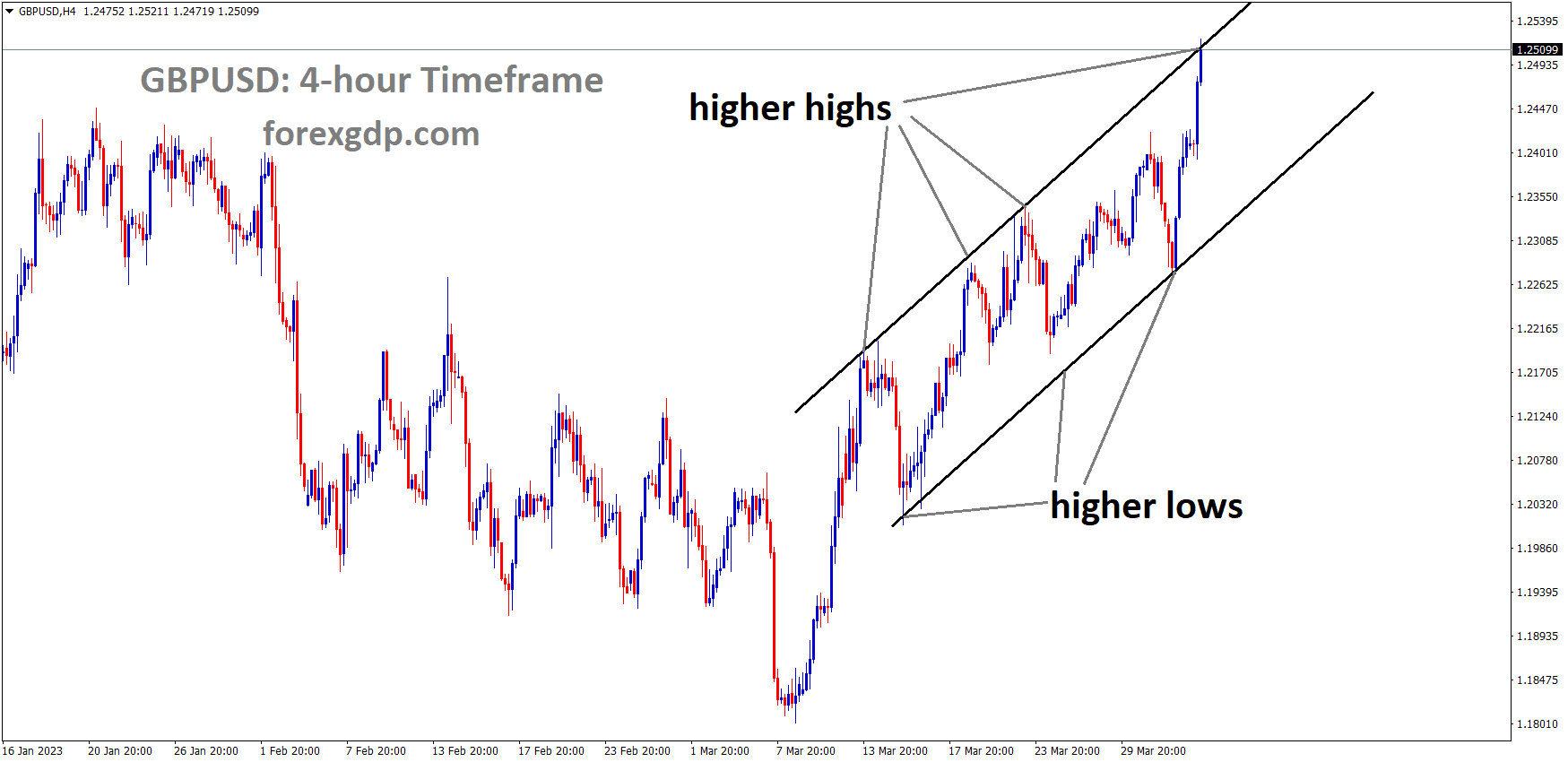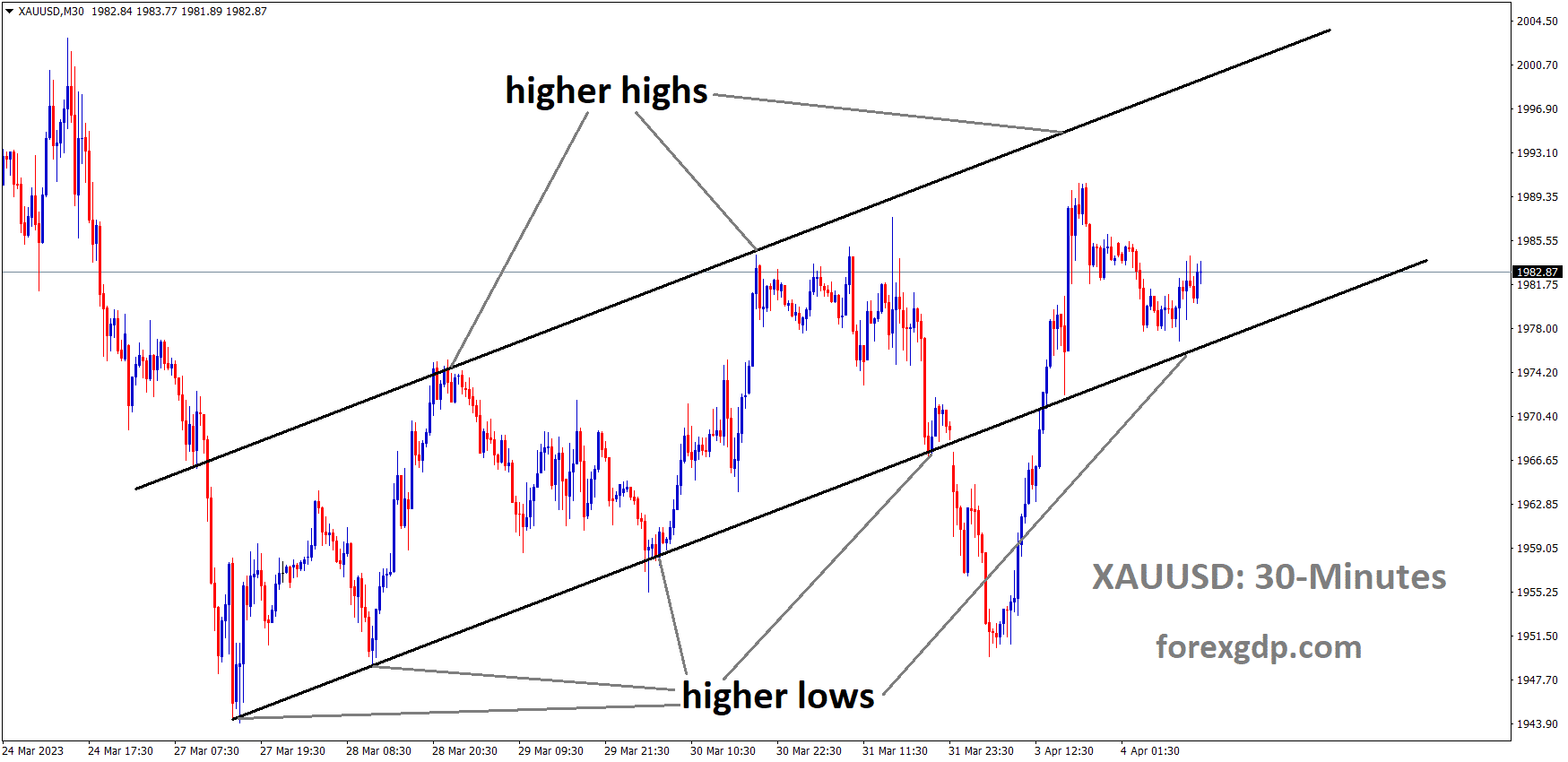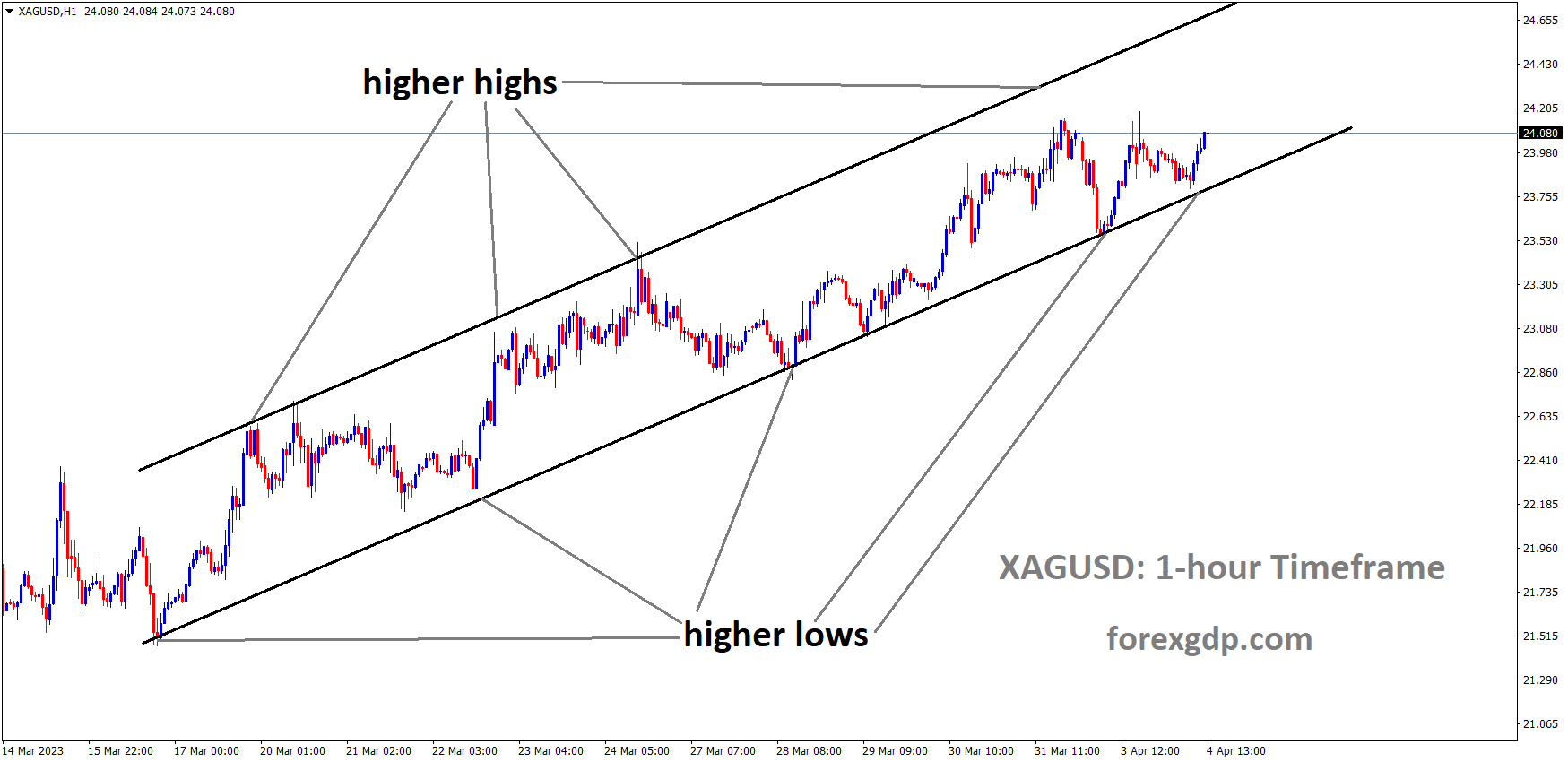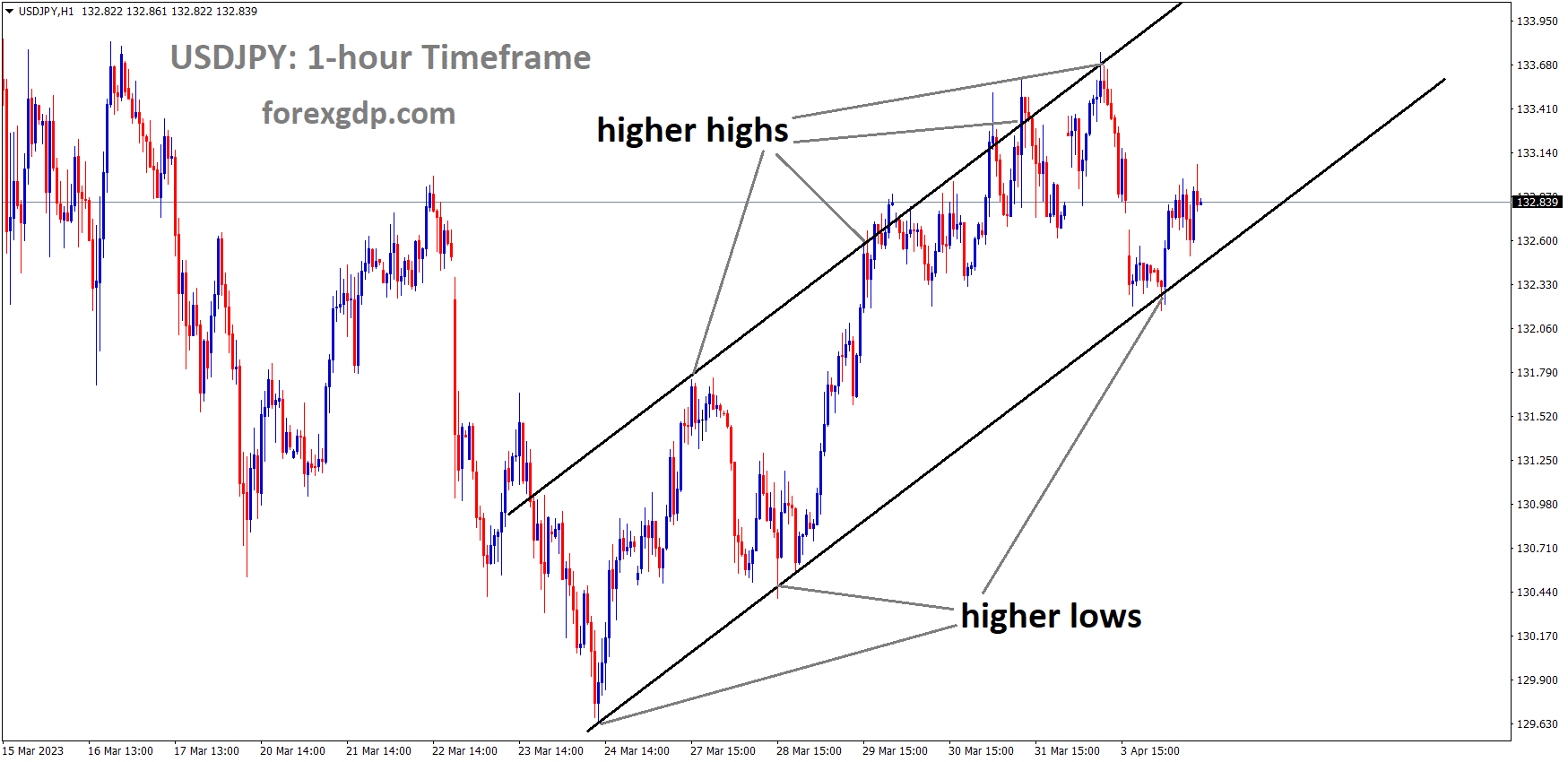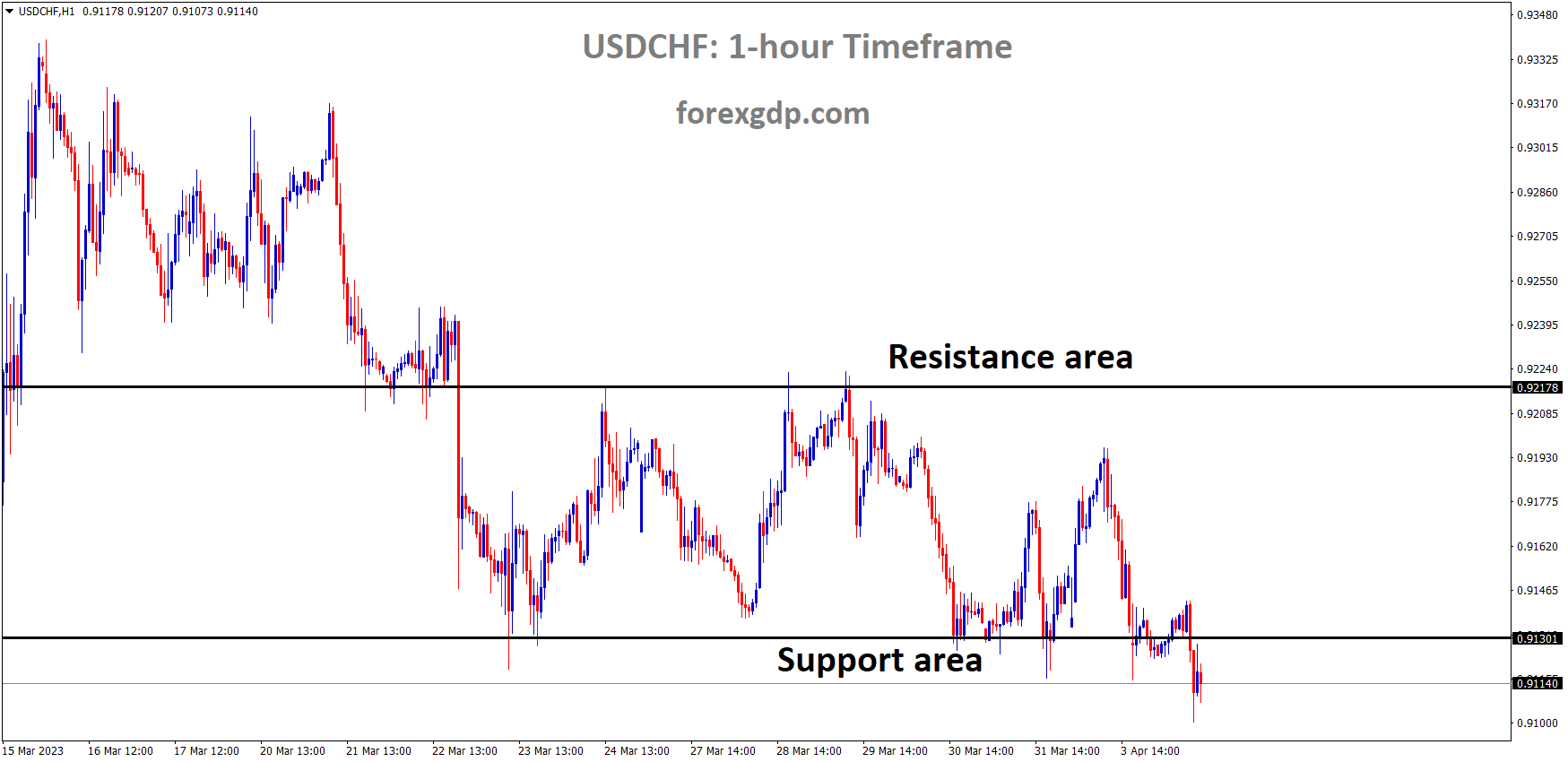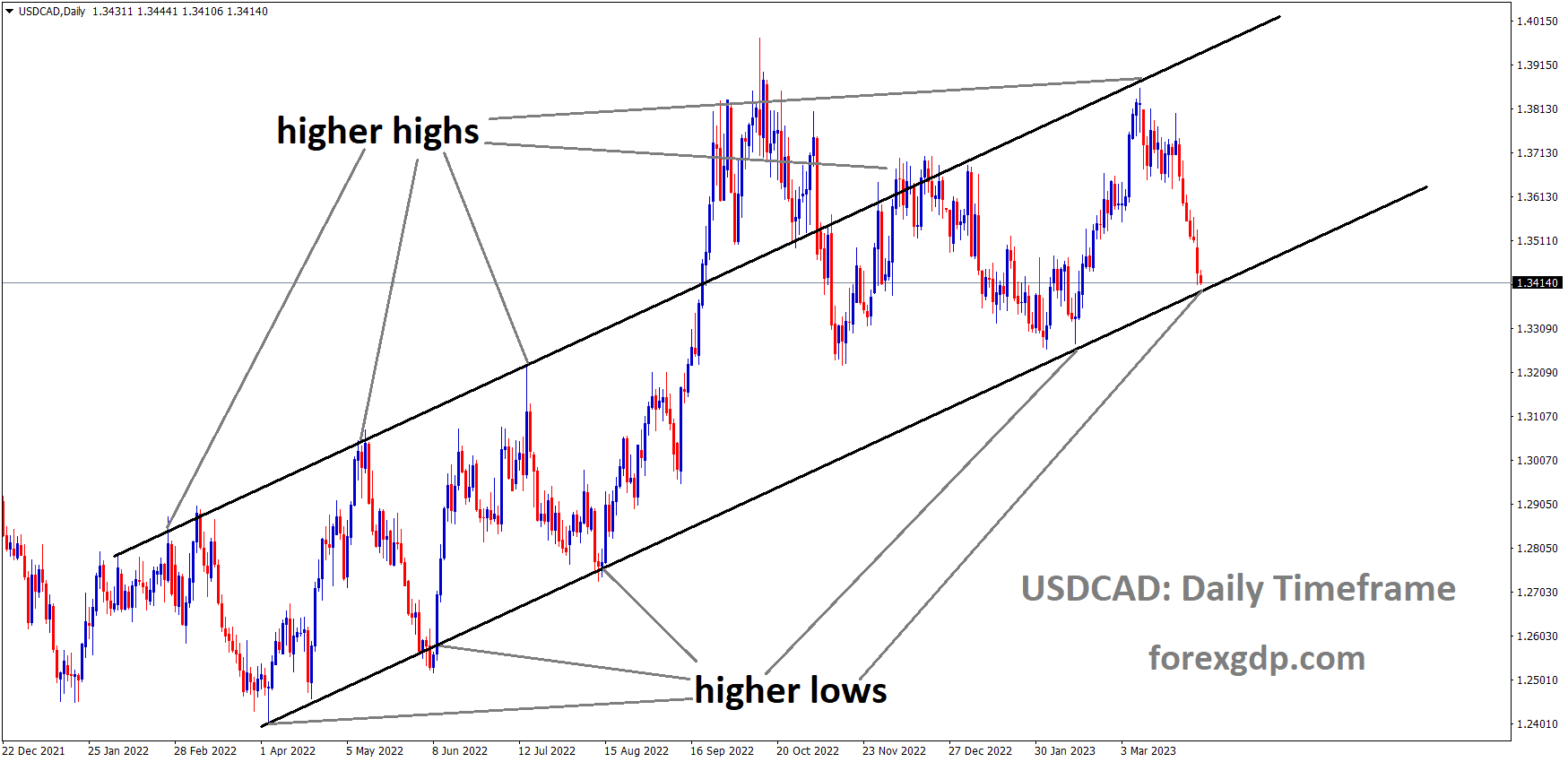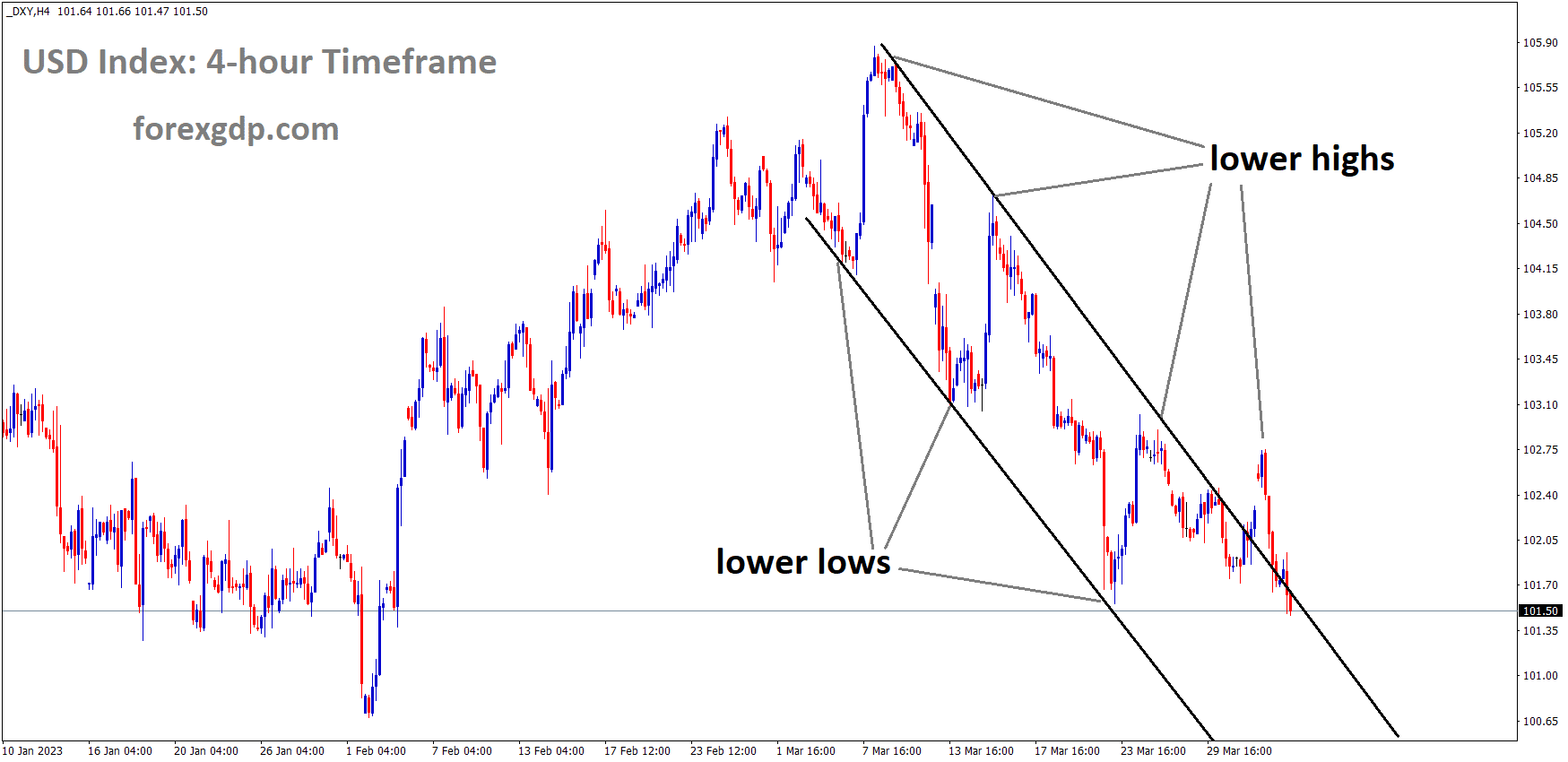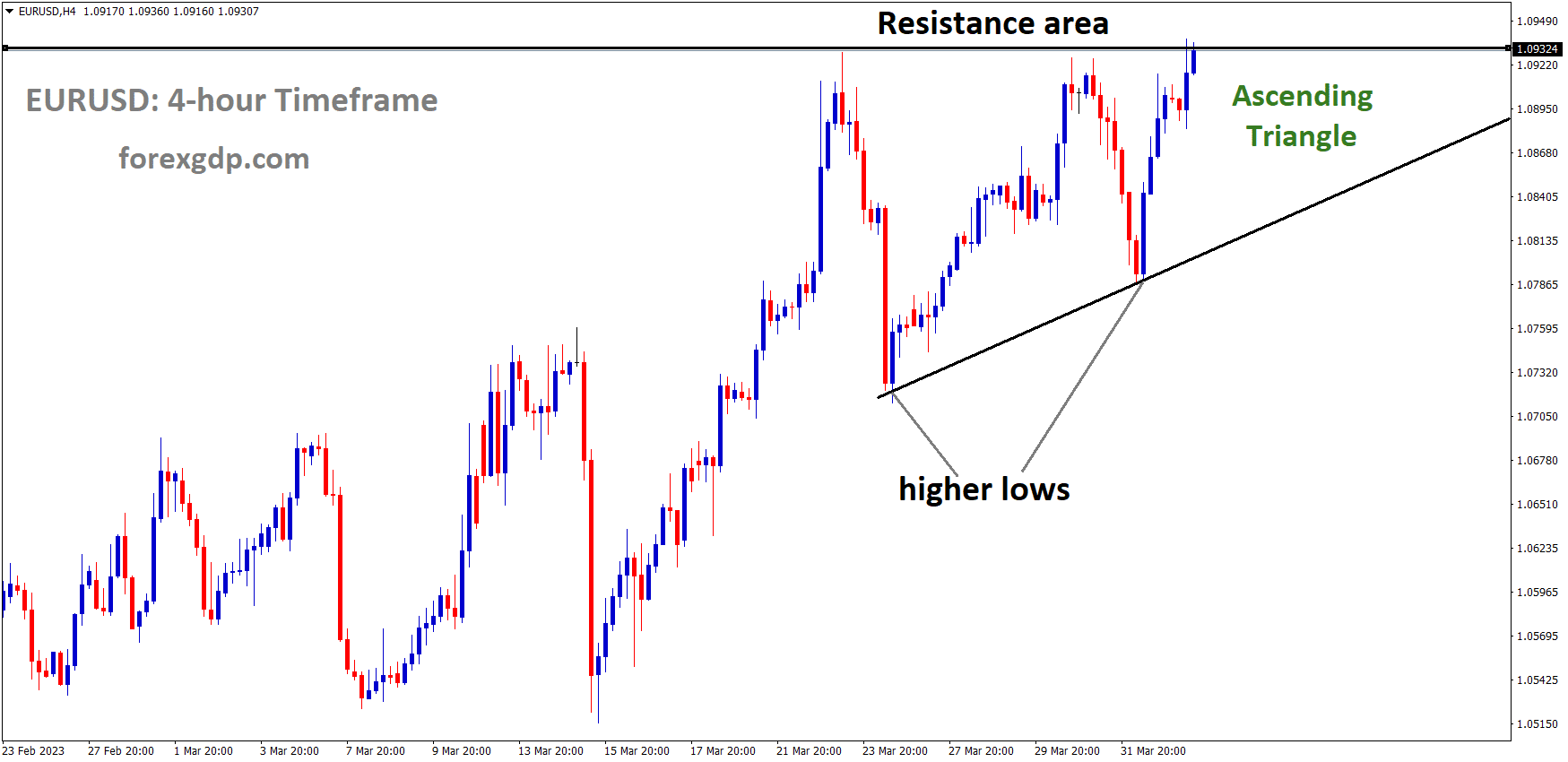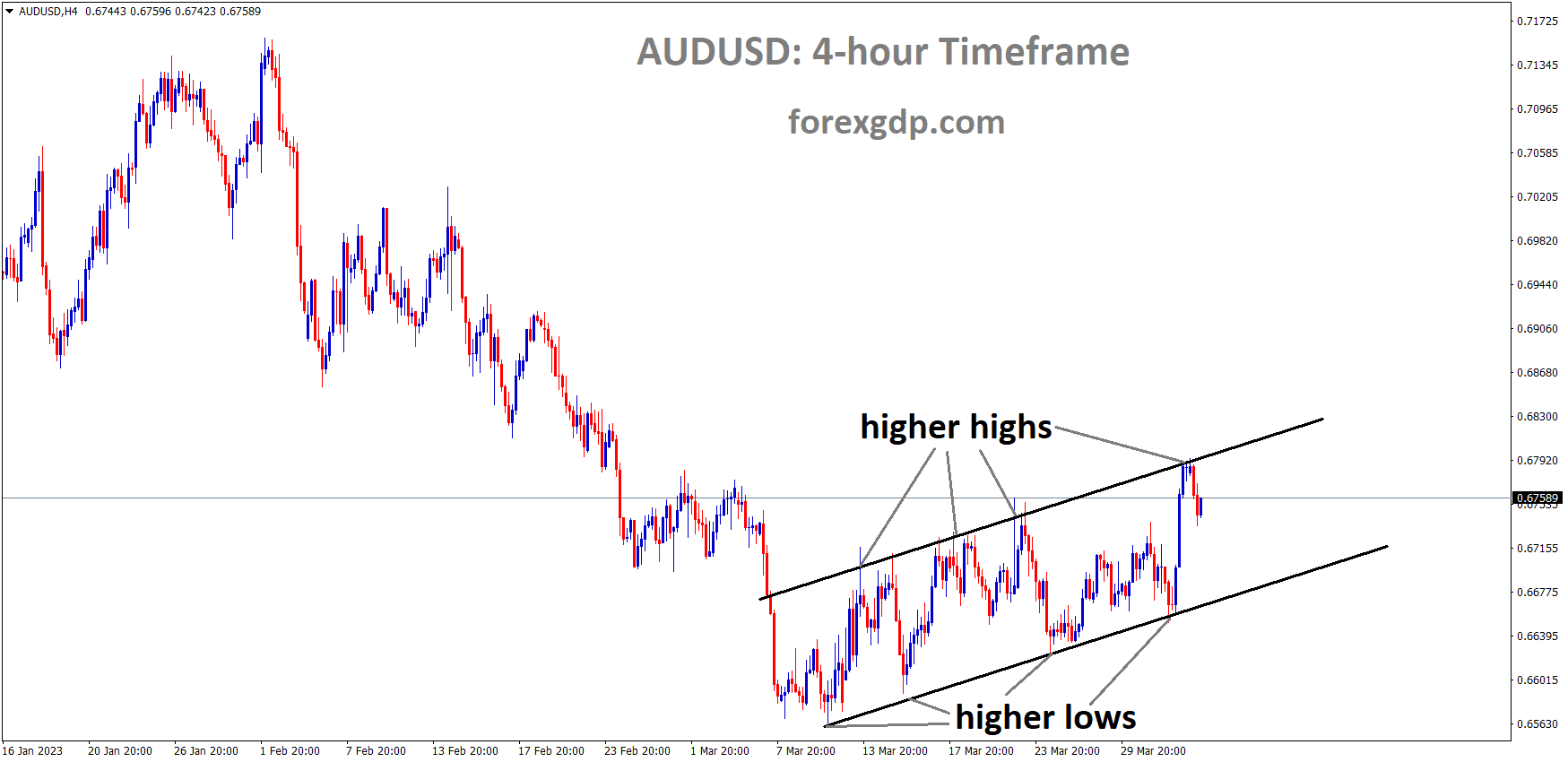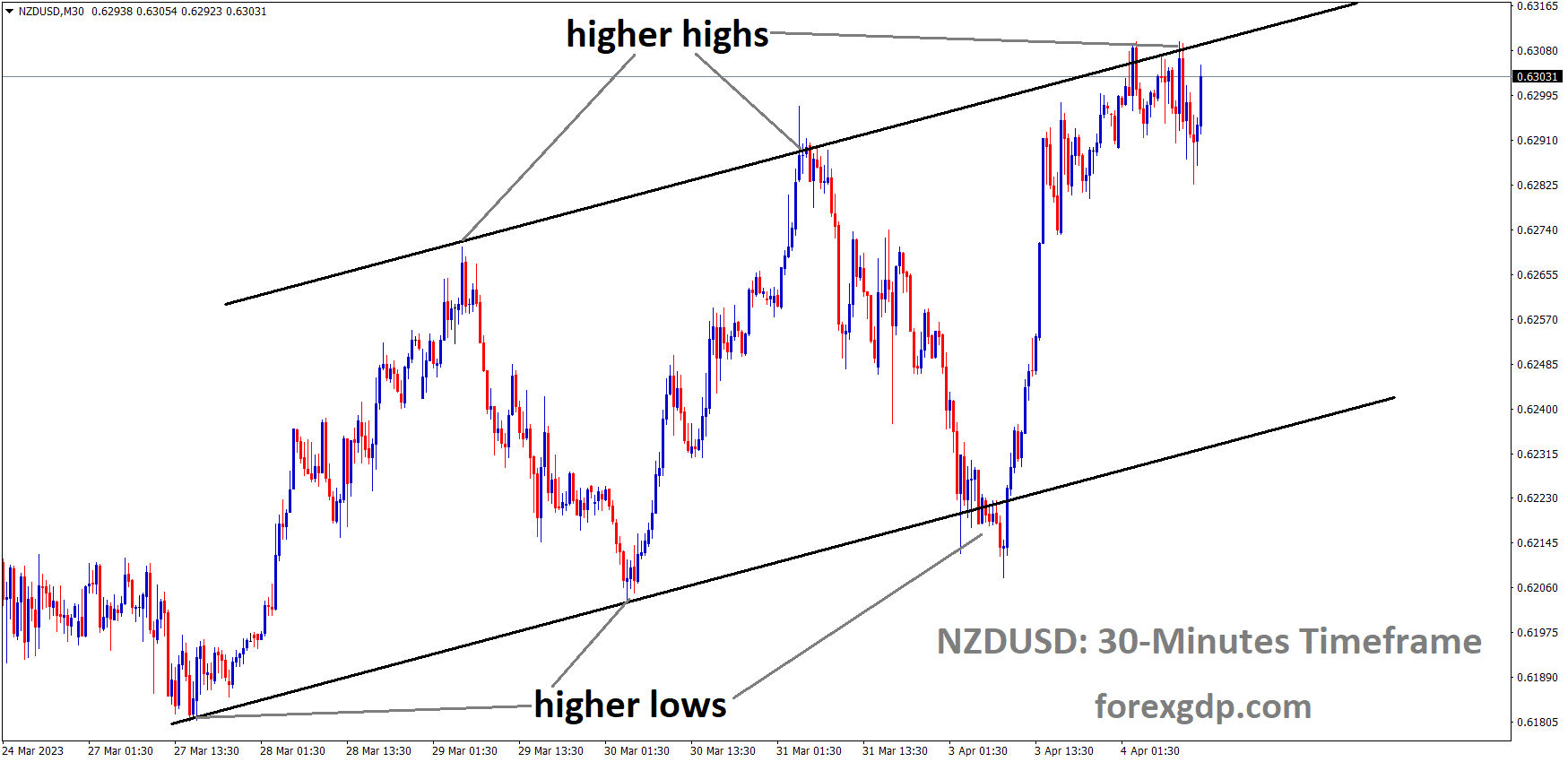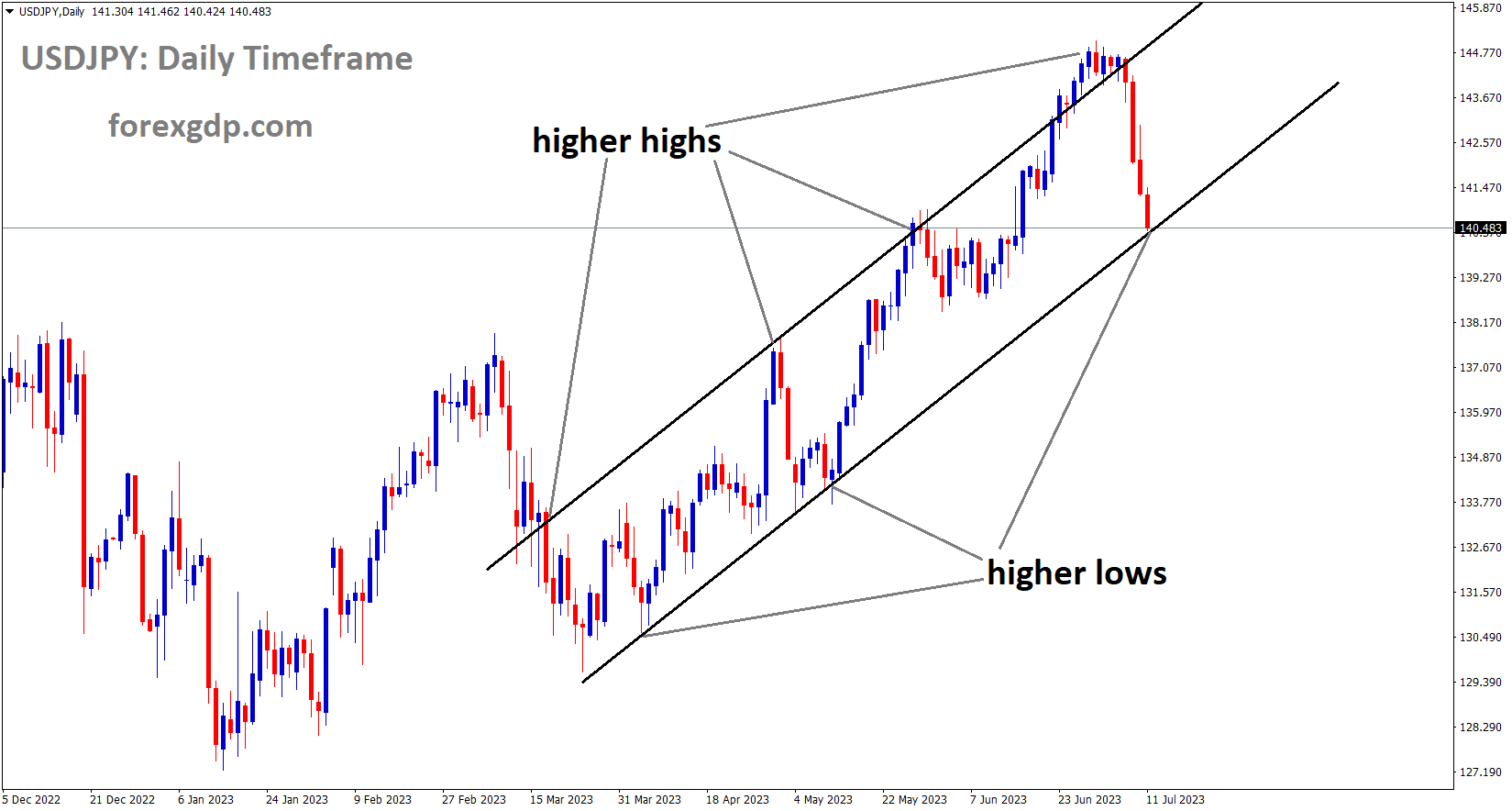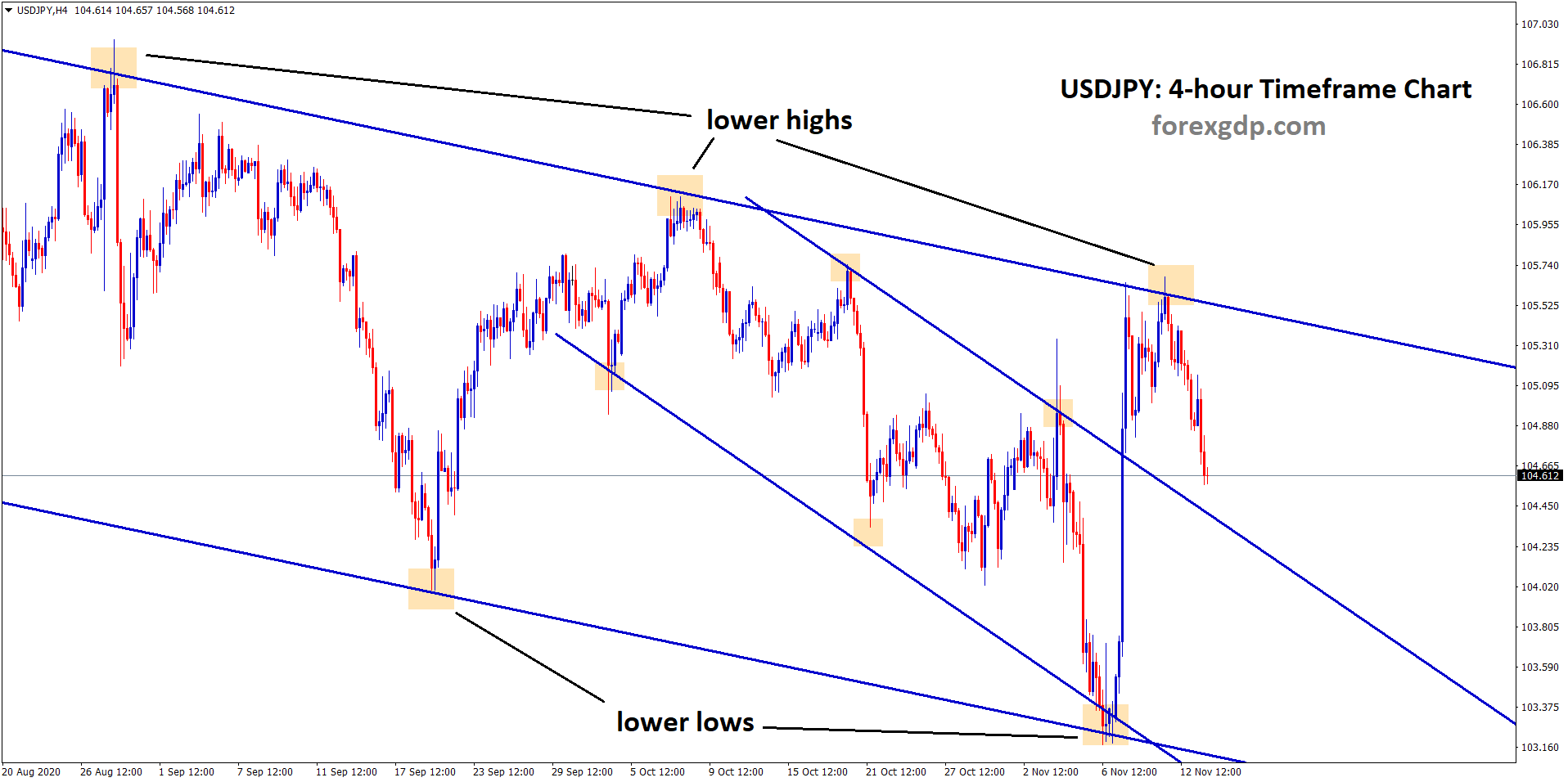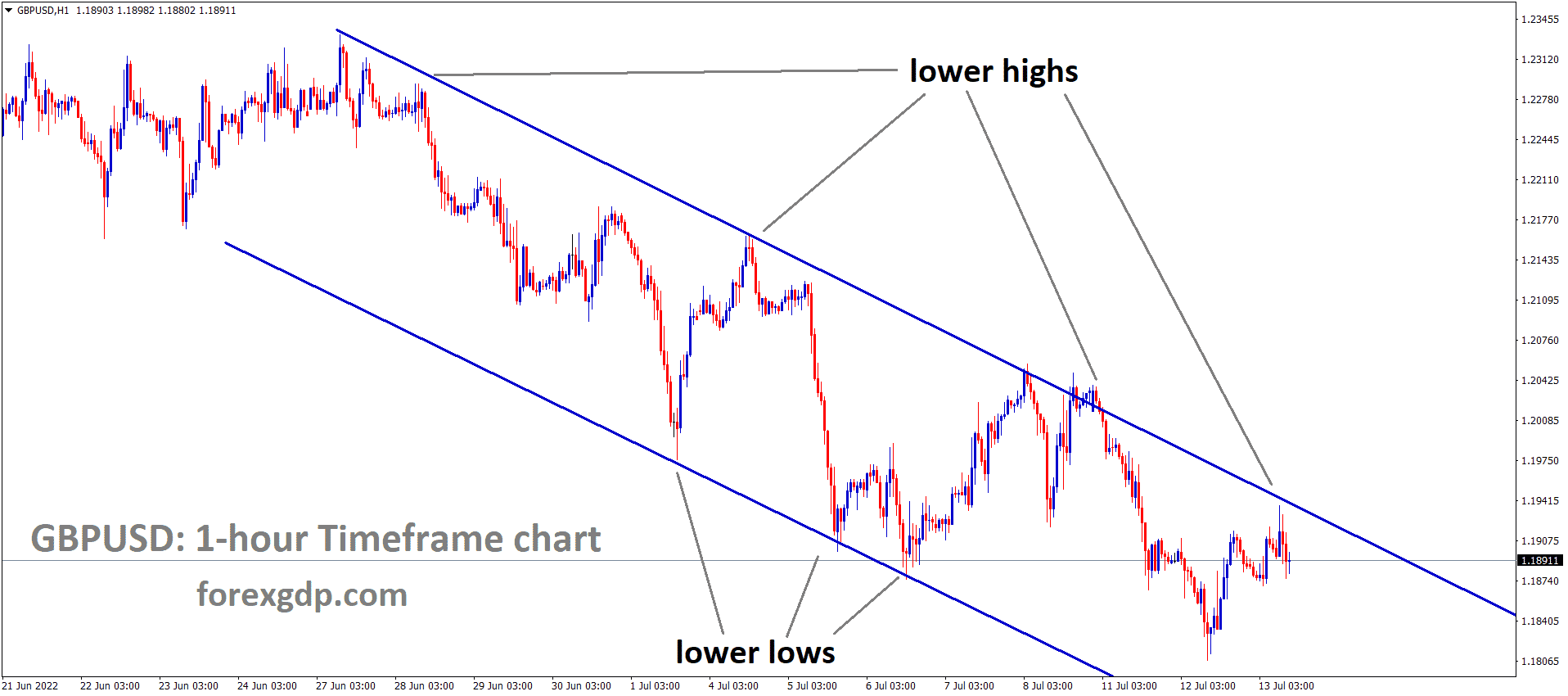GBPUSD Analysis
GBPUSD is moving in an Ascending channel and the market has reached the higher high area of the channel.
The Bank of England has raised interest rates by 400 basis points, according to UK Chief Economist Huw Pill, but the inflation figure is still only in the higher range. The employment market is still only in a tight state, but the Bank of England expects inflation to drop sharply to single digits by this year. According to 75% of surveys, the Bank of England should raise rates by 25 basis points on May 11 and take additional steps to fight inflation. This time, the UK banking system has adequate cash and capital to fight inflation.
Monday’s mid-morning US session trade saw the GBPUSD rise by about 0.54%, climbing from a low of 1.2274 to a high of 1.2420 as a result of a steep decline in the US Dollar during the opening hours of Wall Street. The US manufacturing output in March plunged to its lowest level in nearly three years as new orders continued to decline, according to economic data released on Monday, which had a significant negative impact on the value of the US dollar. The Manufacturing PMI, according to the Institute for Supply Management, dropped to 46.3 last month. This decreased from 47.7 in February to the worst since May 2020. The Federal Reserve’s preferred inflation measure, PCE statistics from the previous week, were mixed. While the headline and core numbers were both slightly below expectations, the super core increased for the second consecutive month to 4.63% YoY, which is the highest level since October.
We expect the Fed’s remarks to continue to have a hawkish slant because this is not the way the Fed wants to go, according to analysts at Brown Brothers Harriman. However, on the back of today’s manufacturing data, federal funds futures are now pricing in a 60% chance of a second 25 basis-point rate increase by the Fed in May. Additionally, futures traders have taken into account a June pause and a December rate reduction. Traders will now anticipate tomorrow’s Services statistics. We anticipate a decline in the ISM Services index following indications of stabilisation at a still-firm level of 55 in January and February, according to analysts at TD Securities. According to analysts at TD Securities, the Monetary Policy Committee’s decision in May regarding the Bank of England is expected to be carefully balanced domestically. The experts said that any early indication of how the MPC members, particularly the centrist and hawkish ones, are positioning themselves will be crucial.
The Bank of England’s Chief Economist Pill emphasised on Monday that data-driven policy is still a necessity. While maintaining the bank’s prediction that inflation will decline sharply this year, he said that it is still too high. We 400 bp rate increase. The implementation of these steps could take up to 18 months. Is more action necessary? We must observe how price changes. Despite the fact that inflation is still too high, he continued, the UK banking system is well capitalized, and well-capitalized banks help fight inflation. Developments in the labour market, which is still tight, will also be crucial for inflation to return to its goal, he said. According to analysts at Brown Brothers Harriman, BoE forecasts for tightening remain muted. The next policy meeting is on May 11, and WIRP predicts that there will likely be a 25 bp hike with chances of another 25 bp hike peaking at around 75% in Q3. The peak policy rate has increased from 4.25% at the height of the financial panic to between 4.5 and 4.75% today, according to the analysts. Although many markets will be closed for the Easter holiday, this week’s attention will be on Friday’s jobs data. US payrolls most likely continued to grow in March at a rate that was still above trend, despite slowing from stronger readings in January and February, according to TD Securities experts. Additionally, we anticipate that the unemployment rate will remain at 3.6% and that salary growth will register a solid 0.3% MoM.
GOLD Analysis
XAUUSD Gold price is moving in an Ascending channel and the market has rebounded from the higher low area of the channel.
After the US ISM manufacturing PMI came in lower than expected at 47.5 compared to the prior reading of 47.7, the price of gold shot up. Today was the BRICS meeting, and among the topics discussed were alternatives to using the US dollar in foreign exchange and international commerce. This is bad news for the US dollar as well.
As the $2000 psychological barrier draws closer in focus, the price of gold has rebounded off the $1950 support region. For the third time in the last 10 days, Gold’s daily candle has closed above $1950, indicating that bulls are ready to make another push for acceptance above the $2000 mark. China is still one of the world’s biggest importers of gold, but overnight data from the country did not assist the precious metal. The March Caixin PMI reading was right around 50, down from 51.6 in February. Clearly, this dampened hopes for higher demand for the precious commodity.
SILVER Analysis
XAGUSD Silver Price is moving in an Ascending channel and the market has rebounded from the higher low area of the channel.
Since London’s open, the Dollar has fallen sharply, which has helped Gold recover after the $1950 mark looked precarious overnight. News that some BRICS members, including Brazil, China, and India, are considering dropping the US Dollar for global trade and forex transactions appears to have re-ignited the dollar’s recent struggles after a short pause overnight. Gold traders may be on edge today due to potential market volatility brought about by the release of US ISM PMI Manufacturing data and remarks from Federal Reserve Policymaker Cook. Given that the United States economy is largely service-based, though, it’s unclear whether or not this information will be enough of a spark.
USDJPY Analysis
USDJPY is moving in an Ascending channel and the market has rebounded from the higher low area of the channel.
Fumio Kishida, the prime minister of Japan, stated that we must encourage the renewal of hydrogen-based energy fuels. To advance the hydrogen energy supply network, we must assemble private capital through green bonds. We must use alternative energy sources to reduce carbon emissions in domestic regions. The government of Japan has always welcomed the growth of the hydrogen energy delivery chain.
Fumio Kishida, the prime minister of Japan, announced via Reuters early on Tuesday that the country would be updating its hydrogen basic policy by the end of May. Additionally, the policymaker demonstrated a willingness to aid in and hasten the hydrogen supply chain.
According to Japanese Prime Minister Kishida, accelerating private investment through green transformation bonds is essential to support domestic decarbonization. In an earlier speech on Monday, the policymaker reaffirmed the stability of the nation’s financial system. The USDJPY is still down near 132.20 after turning around from a 12-day peak the day before.
USDCHF Analysis
USDCHF is moving in the Box pattern and the market has reached the horizontal support area of the pattern.
Martin Schlegel, vice chairman of the SNB, told SRF Reporters that although inflation in the Swiss zone is greater, we will eventually hit our goal of 0-2%. Our goal is to maintain the value of the currency. Our banks maintain solid financial stability, and by selling foreign money and raising interest rates, we strengthen our currency. In order to keep the CHF stronger against other currency combinations, we sold 27 billion worth of currencies last year. The same is what we do this year.
In a Monday interview with Swiss network SRF, Vice Chairman Martin Schlegel stated that the Swiss National Bank would use all available tools to reduce inflation, including further raising interest rates as well as selling foreign currencies. Price stability is our definite mission, and it is very clear.
And we’ll exert every effort to return inflation to the desired range of 0 to 2%. He told SRF, “Of course, I can’t predict anything, but as you can see, our inflation projections are higher now than they were in December. That implies that we will keep raising interest rates as needed.
There are currently no indications that this could pose a danger to Switzerland’s financial stability. At the previous assessment, we made it very plain that we are also willing to sell foreign currencies in order to strengthen the franc. We spent 27 billion doing that in the most recent quarter. That’s a sizable sum. We examine the currency rate and, if required, will take action.
USDCAD Analysis
USDCAD is moving in an Ascending channel and the market has reached the higher low area of the channel.
As a result of OPEC+’s unexpected decision to reduce oil production by 1.1 million barrels per day, the Canadian Dollar surges.
The previous day, oil prices increased by 5%, which aids the Canadian Dollar’s robust movement against other currencies.
On Monday, the Canadian dollar strengthened due to broad U.S. dollar weakness in the foreign exchange market and, more significantly, due to higher oil prices during the session. Oil is Canada’s top export. WTI and Brent both increased by over 5% after OPEC+ announced a production reduction to stabilise energy markets, which had been volatile in recent weeks. Oil prices will rise as a result of OPEC+’s decision to cut output beginning in May, establishing a floor for the commodity in the event of a severe worsening in the global economic outlook. The Canadian dollar could benefit from this situation if sentiment continues to improve and volatility stays low.
This set the stage for a 0.6% decline in USDCAD on Monday, which saw the pair fall below the psychological 1.3500 level and head towards trendline support at 1.3420, just above the 200-day simple moving average, the line in the sand for bears and bulls. An key technical outlook clue could be found in how prices respond here, with a break exposing 1.3370 and then 1.3220. The bearish situation is more likely at present, but a bullish reversal should not be dismissed out of hand. However, a surge in purchasing interest could pave the way for a push towards the 1.3500 handle if USDCAD is unable to break below the 1.3420-1.3400 support zone. In the event of continued growth, attention will move to the 50-day simple moving average.
USD Index Analysis
US Dollar index is moving in the Descending channel and the market has fallen from the lower high area of the channel.
As stated by Janet Yellen, US Treasury Secretary, we did not anticipate the production reduction from OPEC+nations yesterday. This will cause global inflation rates to rise. We already set a cap on oil prices to Russia at $60 per barrel; however, output cuts have driven up oil prices and put a burden on consumers worldwide.
According to Reuters, U.S. Treasury Secretary Janet Yellen criticised a possible oil output cut by OPEC and allies on Monday, calling it a unconstructive act” that would increase uncertainty about the future of global growth and increase costs for consumers during a period of high inflation. What OPEC has done is unfortunate in my opinion. The effect on costs is something I can’t predict at this time. For a more thorough evaluation, I believe we need to wait a little longer, Yellen told reporters after a talk at Yale. In response to the OPEC+ output cut, Vice President Joe Biden of the United States said, Not as bad as you think. This is obviously not good news for world economic expansion.
And it compounds problems at a moment when price stability is especially important due to rising inflation. Reversing the recent pattern of falling petrol prices, which has helped keep inflation in check, would have negative effects. When asked about the OPEC+ production cut plan’s potential effect on the $60 per barrel price cap on Russian crude oil imports imposed by Western allies, she responded that she did not regard the plan as a major factor. The price ceiling could be reevaluated by the coalition countries, but I don’t think it’s necessary at this moment.
Although she acknowledged today’s reaction to the OPEC+ action, she added, “I want to withhold judgement now on just what impact this will have on oil prices.” Small and medium-sized banks were losing fewer deposits, but I was keeping a careful eye on the situation because I was not willing to allow contagious runs to develop in the US banking system. After the collapses of Silicon Valley Bank and Signature Bank, the Treasury, the Federal Reserve, and the Federal Deposit Insurance Corporation took steps to restore public faith in the financial system. We are keeping a careful eye on the situation, but my sense is that outflows from smaller and medium-sized banks are decreasing and things are stabilising. We have not solely focused on climate change but have instead addressed a wide variety of issues, including financial risks. There is no major flaw in the banking structure, in my opinion.
EURUSD Analysis
EURUSD is moving in an Ascending triangle pattern and the market has reached the resistance area of the pattern.
Sergei Lavrov, the foreign minister of Russia, claimed that relations between Moscow and Brussels are tense, that the European Union has lost Moscow, and that if Russia needs to keep a tense relationship, it will do so. This phrase worries the relationship between Russia and Europe on the one hand, and the relationship between Taiwan and the US on the other. Now that Ukraine and Taiwan have connections to Europe and the US, respectively, Russia and China fight against those relationships.
The bulls pause as the EURUSD trades between 1.0890 and 1.0885 in the early hours of Tuesday due to a light schedule and a slightly pessimistic mood. The recent decline in the Euro-dollar combination may also be related to the rise in US Treasury bond yields, which has given the US Dollar room to recover from its early-week decline before secondary data. The US Dollar Index shows modest gains around 102.20 the day after dropping to its lowest level since March 22. With this, the dollar index against the six most important currencies rises from its one-week low. Having printed a four-day and a two-day downtrend, respectively, the US 10-year and two-year Treasury note yields lick their wounds at around 3.42% and 3.98%.
In addition to the corrective bounce in yields, the EUR/USD price was also affected by conflicting worries about inflation and the global difficulties involving Russia and China. However, the Organization of the Petroleum Exporting Countries and its allies, led by Russia, are referred to as OPEC+. On Monday, OPEC+ unexpectedly declared a production cut, reviving concerns about inflation. The move by OPEC+, according to US President Joe Biden, is not as bad as you might assume. However, US Treasury Secretary Janet Yellen and US Federal Reserve Board Governor Lisa Cook raised concerns about rising inflation and obstacles to global development. In other places, Russian Foreign Minister Sergei Lavrov stoked concerns about an intensifying dispute between Moscow and Brussels by declaring, The European Union has lost Russia.” The decision-maker also stated that, if necessary, Moscow will deal with Europe harshly. Additionally, the US-China rift is being discussed because Washington appears to be ignoring Beijing repeated criticism of US-Taiwan relations.
S&P 500 Futures halt a four-day uptrend near its highest levels since February 16 amid these plays. In order to guide intraday EURUSD movements, the Eurozone Producer Price Index for February will be released before the US Factory Orders for the same month. The recent escalation of the geopolitical problems will focus a lot of attention on the risk catalysts, which may enable the Euro pair to stabilise.
AUDUSD Analysis
AUDUSD is moving in an Ascending channel and the market has fallen from the higher high area of the channel.
The result of the RBA’s monetary policy meeting is that the interest rate decision will not change and the cash rate will stay at 3.60%, the same as last month. RBA said in a statement that this is just a break in the cycle of rate hikes and that there could even be a 25bps rate cut by the end of the year. If inflation goes up, we respond in a way that fits the case.
After the RBA decided to leave interest rates unchanged for the first time since May 2022, the Australian dollar experienced a minor decline. The RBA didn’t completely remove all wiggle room, leaving the door open to future increases. The Board expects that some further tightening of monetary policy may well be required to ensure that inflation returns to target, according to the accompanying statement on monetary policy. The markets presently price in no further rate hikes and a greater than 50% chance of a 25 basis point cut by year’s end. Australian dollar market action today follows yesterday’s dramatic increase. After OPEC+ reduced its crude oil output target by 1.1 million barrels per day, markets were shaken by the massive increase in crude oil prices. The action exacerbated already severe supply constraints.
Because of this, Treasury rates fell, which weakened the US dollar. The AUDUSD pair benefited the most as a result. Possible contributors to the uptick include a narrowing yield gap between US Treasuries and Australian Commonwealth Government bonds. As of May 2022, the cash rate was increased by the RBA by 350 basis points. The Australian Prudential Regulation Authority issued the following announcement in October 2021.
The Australian Prudential Regulation Authority has instructed financial institutions to determine whether or not a potential user can afford monthly payments at an interest rate at least 3.0 percentage points higher than the loan product rate. The previous bar was set at 2.5%. There has been a lot of talk about the’mortgage cliff,’ the point at which debtors will be forced to refinance their outstanding debt at higher rates. These loans may be at, or slightly above, the limit APRA considers responsible. The RBA’s reluctance to tighten monetary policy while CPI stays significantly above its target of 2-3% over the business cycle may be partially explained by this.
Later this month, the Australian Bureau of Statistics will unveil the quarterly Consumer Price Index for the first time since the new monthly CPI number was introduced in October. The new monthly gauge only accounts for about two-thirds of the broader quarterly figure’s measured products and services. The RBA has previously stated that the declining CPI readings each month justify a less aggressive stance. The central bank may have trouble sleeping if the monthly read fluctuates by another 0.6% in the incorrect direction. The Reserve Bank of New Zealand, across the Tasman Sea, is widely expected to increase its official cash rate by 25 basis points tomorrow, to a new all-time high of 5.0%. NZDUSD rose above 63 cents for the first time in 7 weeks today.
NZDUSD Analysis
NZDUSD is moving in an Ascending channel and the market has reached the higher high area of the channel.
If feasible, the cash rate will be between 5.00 and 5.25% after the RBNZ raises rates by 25 basis points at its meeting tomorrow. The New Zealand economy contracted by 0.30% this quarter after contracting by 0.60% in the final three months of 2022. After the effects of the flood, New Zealand families are under a lot of stress, and the inflation rate is 7.3%. In order to reduce the weight of inflation on households and allay concerns about a recession, the RBNZ must raise interest rates.
In the early European session, NZDUSD is exhibiting a back-and-forth movement above the round level support of 0.6300. The US Dollar Index has continued its rebound above 102.20, and the Kiwi asset is running into barriers in its attempt to maintain its business above 0.6300. The chances of the Federal Reserve raising interest rates by 25 basis points have suddenly increased, which has caused the USD Index to extend its recovery move. The likelihood of a further rate increase of 25 basis points to 5.00–5.25% has abruptly risen above 58%, according to the CME Fedwatch tool. The USD Index appears to have received some support from remarks made by Lisa Cook, governor of the US Federal Reserve Board. Fed Governor Lisa Cook stated on Monday that the US has high inflation and low unemployment. The Fed is thus concentrating on inflation at the moment, and although the process of deflation is already under way, we are not yet there.
As the Federal Reserve’s interest rate guidance remains unclear, the S&P500 futures are exhibiting choppy movements in the early European session, but the risk appetite motif is still strong. US Treasury Yields are not being helped by rising possibilities of consecutive Federal Reserve rate hikes of 25 basis points. Ten-year US Treasury note yields are currently hovering around 3.42%. After the United States ISM Manufacturing PMI data fell below 50.0 for five straight releases on Monday, signalling that the US growth rate is likely to slow down this quarter, the US Dollar Index experienced a sharp decline. The economic statistics decreased from a consensus estimate of 47.5 and a previous release of 47.7 to 46.3.
Additionally, the New Orders Index decreased to 44.3 from the anticipated 44.6, indicating that forward demand is anticipated to stay muted. The likelihood of a coming recession has increased due to the US Manufacturing PMI’s lower-than-expected reading. The Federal Reserve’s higher rates are preventing businesses from tapping advances, so they are struggling to expand their output. Additionally, households are under a lot of stress as a result of the rising inflationary pressures as they try to counteract the effects of inflated products. This has led to the requirement to pause rates earlier in order to boost investor trust. After this week’s release of the US employment statistics, investors are anticipated to receive insightful guidance. The Friday Nonfarm Payrolls data will be closely watched because greater additions of new workers would show that the overall demand is strong and the labour cost index would keep flexing its muscles.
However, the focus will stay on the US Automatic Data Processing Employment Change data from Wednesday. Estimates predict that the economic statistics will come out at 205K instead of 242K as it did previously. As households continue to recoup from the flood situation and persistent inflation, which has already added significant burdens, the New Zealand economy has been contracting. According to Reuters, New Zealand’s economy is predicted to have contracted by 0.3% this quarter, 0.6% in the final three months of 2022, suggesting a mild recession that will probably cause the RBNZ to slow its frantic rate hike pace.
To protect the economy from further turbulence, the Reserve Bank of New Zealand is anticipated to handle New Zealand’s stubborn inflation in the short term. The newest estimate of inflation in the Kiwi economy is 7.3%, and it needs to be controlled sooner with constrictive monetary tools. Over 90% of analysts surveyed by Reuters between March 27 and 30 predicted Reserve Bank of New Zealand Governor Adrian Orr would raise the Official Cash Rate by 25 basis points to 5.00% at its meeting on April 5, the highest since December 2008.
Don’t trade all the time, trade forex only at the confirmed trade setups.
Get Live Free Signals now: forexgdp.com/forex-signals/

